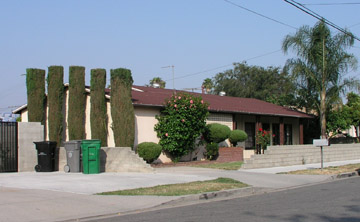Li’l Ronnie wielding a Japanese saber? Did his daddy pick up an NCO Shin-Gunto? Or an ever-venerated Nihonto, forged in feudal days by the solitary swordsmith? Whichever, it cut daddy real good. Thousands of swords n’ sabers were “liberated†from Japan during the occupation, but probably few saw action on American soil.

Fewer still went into action in Baldwin Park, which is best known as being, in 1948, the birthplace of In-N-Out, noble innovator of the burger-specific two-way speakerbox.

The Times reports the death of UCLA professor Eric Monkkonen, who spent years studying murder in the U.S. and focused on Los Angeles. Among his many findings was that the homicide rate in Los Angeles decreased after World War II.
As Times writer Elaine Woo notes:
“The scholar also found that what goes up at some point goes down, and that one of the ebbs in L.A.’s murder rate occurred, surprisingly, after World War II.
â€ÂConventional wisdom held that wars begat violence at home, that men returned from combat with a propensity to use weapons and kill. Monkkonen speculated that returning soldiers were so sickened by gunplay that they were less inclined to murder. He also suggested that their domestic orientation — they came home and started families, launching the postwar baby boom — actually had a calming effect, as far as murder trends were concerned.â€Â
Although his death interrupted his research on murder in Los Angeles, the Journal of Interdisciplinary Research plans to publish a posthumous article in August: “Homicide in Los Angeles, 1827-2002.â€Â
The complete obituary is here, although it will eventually vanish from The Times’ website: https://www.latimes.com/news/obituaries/la-me-monkkonen15jun15,0,6034204.story?coll=la-home-obituaries
https://www.lmharnisch.com